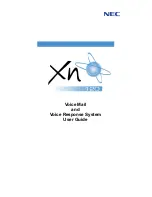
14
Service Search
satellite position, frequency range, symbol rate, polarization
and LNB frequency corresponding to the frequency range.
So you might not have to specify the
LNB Frequency
option.
However, if you have selected the
Other
entry at the
Satellite
Name
option to specify a satellite that is not in the satellite list,
you might have to fill in the correct LNB frequency. The abso-
lute difference between a broadcasting frequency and its LNB
frequency must be within 950 to 2150 MHz. For example, if the
frequency band of your desired satellite ranges from 3660 to
4118 MHz, you have to set the
LNB Frequency
option to
5150
MHz
.
The LNB has to be supplied with electric power to operate. Set
the
LNB Power
option to
On
if it does not have any other power
supply.
If you use a dual LNB or two antennas which is connected to
the 22 kHz tone switch box, set the
22 kHz
option to
On
.
The digital receiver is designed to be compatible with DiSEqC
(Digital Satellite Equipment Control) switches. It is possible
to connect several antennas to one digital receiver by DiSEqC
switches. A DiSEqC 1.0 switch allows switching between up to
four satellite sources and a DiSEqc 1.1 switch allows switching
between up to 16 satellite sources.
Set the
DiSEqC 1.0
option and the
DiSEqC 1.1
option accord-
ing to your antenna configuration.
For example, to select the antenna con-
nected to the
A5
input in the left figure, set
the
DiSEqC 1.1
option to
2 of 4
and the
DiS-
EqC 1.0
option to
1 of 4
. If you have a mini
DiSEqC 1.0 switch which has only two in-
puts, you should set the
DiSEqC 1.0
option
to
Mini A
instead of
1 of 4
.
















































